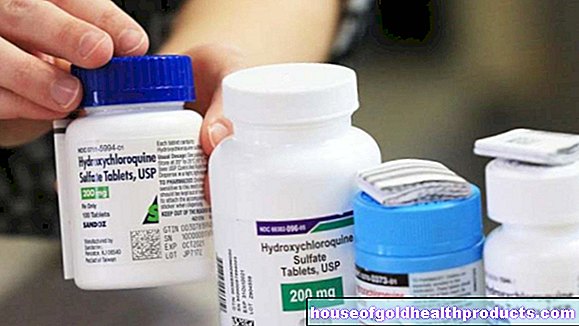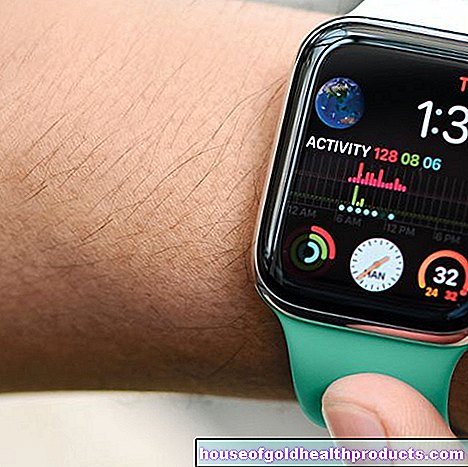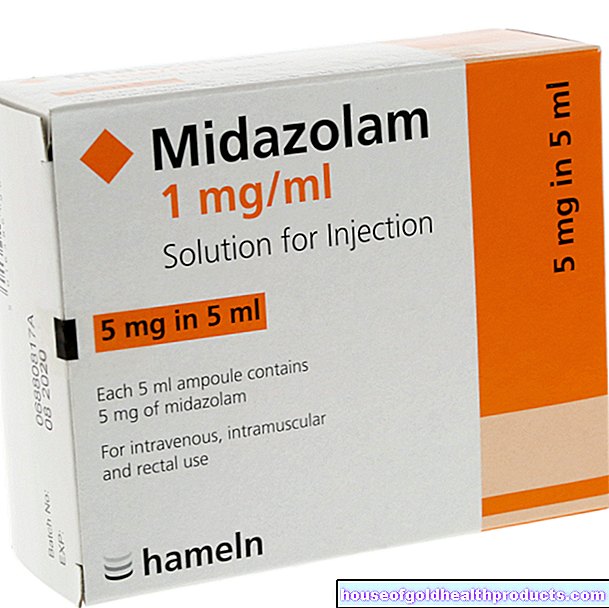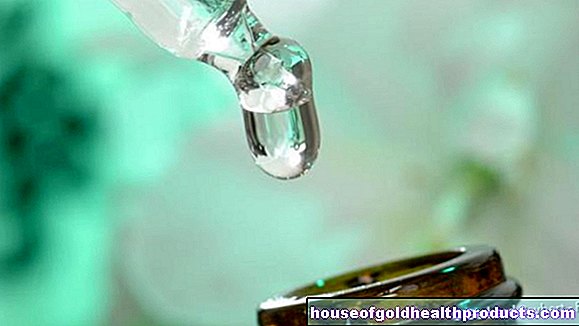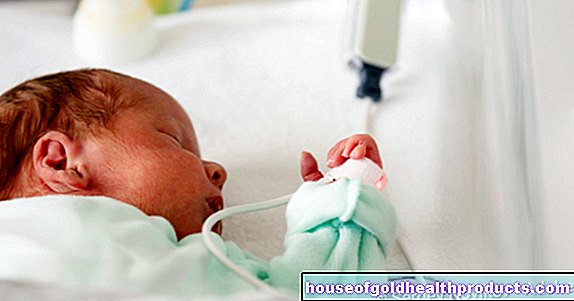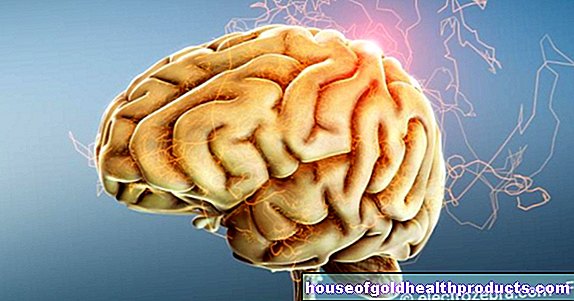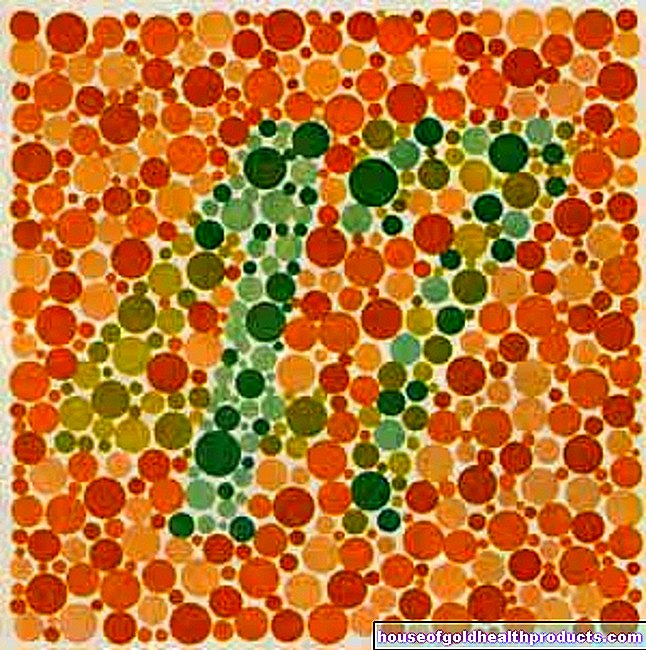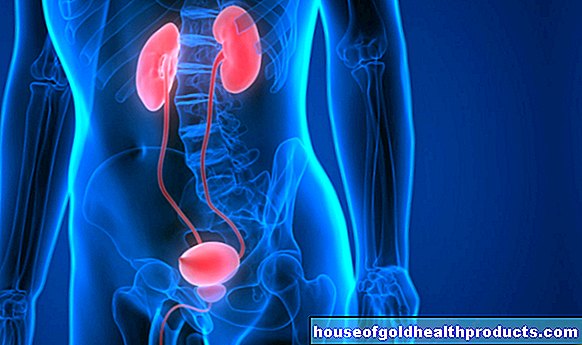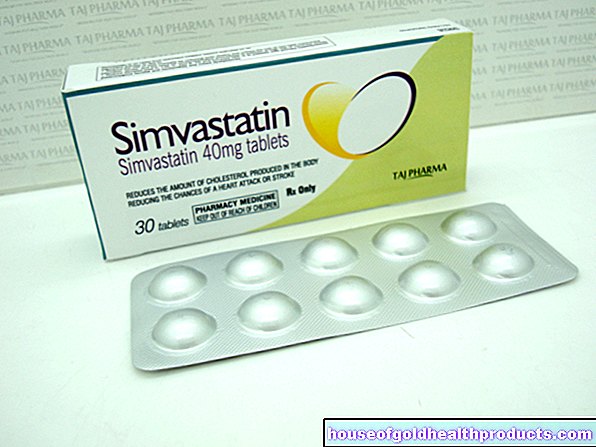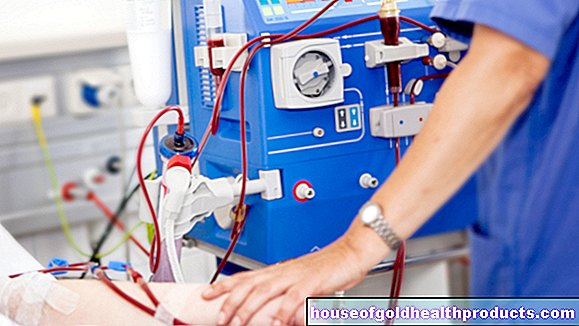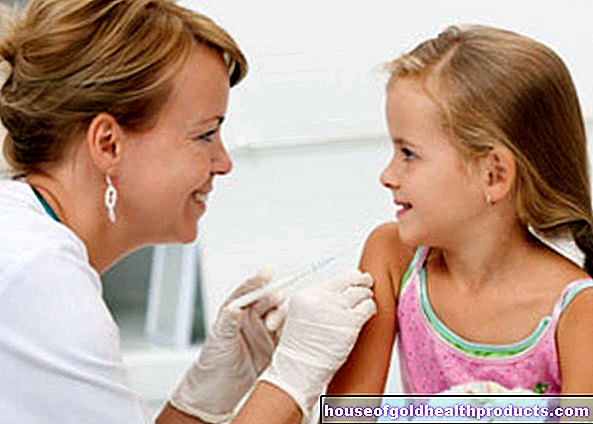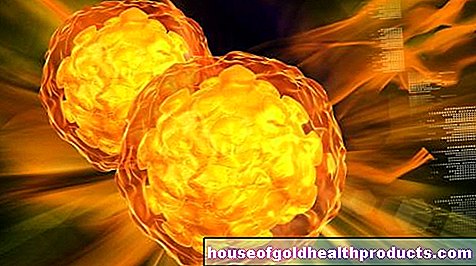Heart defects (vitien)
A heart defect is a congenital malformation or a malfunction in the heart that has arisen in the course of life. If the heart valves are particularly affected, one speaks of a (heart) valve defect. Read here about the symptoms of heart defects, the types of heart defects and how they are treated!
What are heart defects?
Heart defects describe malformations of the heart in general (heart vitium, vitium cordis) or especially of the heart valves (valve vitium). The malformations can affect both muscular parts and the connective tissue of the heart. In addition, in some diseases the outgoing blood vessels are abnormally changed or insufficiently developed.
In principle, doctors differentiate between congenital and acquired heart defects. You can also use anatomical changes in the heart and heart valves to subdivide the clinical pictures into the following malformations:
- Openings in the heart septum separating the left and right halves of the heart. Blood flows through this "hole in the heart" and connects the body and pulmonary circulation (shunt).
- Narrowing (stenosis) of valves or large blood vessels
- Changed position of the vessels, a heart chamber or the whole heart
- Incomplete development of ventricles or vessels. The structures are too small or missing completely.
Heart defects have different causes. Mostly it is an interplay of genetic predisposition and environmental influences. For example, a viral infection or the use of drugs or alcohol during pregnancy can cause heart defects in the unborn child.

Congenital Heart Defects (AHF)
About one percent of all newborns suffer from a congenital heart defect. This is the most common congenital organ malformation (anomaly). The term “congenital heart defect” includes anatomical malformations of the heart and / or the vessels near the heart.
Every third baby with a congenital heart defect also suffers from malformations in other organ systems, especially in the urinary and genital organs. This is especially true if the structure or the number of chromosomes (packaging of the genetic material) are changed.
Classification of congenital heart defects
In many heart malformations, there is a pathological connection between the right and left sides of the heart. One also speaks of a "hole" in the heart. This can lie between the atria as well as the ventricles. The blood flows through the hole from one side of the heart to the other.
Doctors speak of a so-called shunt. The pressure inside the halves of the heart determines the direction of the shunt, i.e. the direction of blood flow through the opening between the sides of the heart. Such a connection can also exist between two vessels. Then the pressure in the vascular system decides where the blood flows.
Doctors use the shunt direction to classify different types of congenital heart defects. There are heart defects
- without shunt
- with left-right shunt (blood from the left half of the heart flows into the right half of the heart instead of exclusively into the body, the lungs are supplied with more blood than usual)
- with right-left shunt (oxygen-poor blood used up in the body flows from the right heart not (only) through the lungs, but also directly into the right heart or the body's circulation).
With a right-left shunt, the body is supplied with sufficient blood, but receives too little oxygen. The skin and mucous membranes turn blue due to the lack of oxygen. Doctors then speak of cyanosis and therefore also call cardiac malformations with such anomalies cyanotic heart defects.
With a left-right shunt, however, there is usually no immediate cyanosis. However, it can massively disrupt the circulatory system, especially when a lot of blood flows through the opening in the heart septum. Then the body receives too little, while the lungs receive too much blood. Doctors combine these malformations with those who do not have a shunt opening to form what are known as acyanotic heart defects.
Note:
A left-right shunt can turn into a right-left shunt and thus cause cyanosis if the pressure conditions in the heart and / or in the lungs change in the course of the disease.
List of congenital heart defects
The following diseases belong to the congenital heart defects. Heart defects without a shunt (20-30 percent of all congenital heart defects) include:
- Pulmonary valve stenosis: The valve between the right ventricle and the pulmonary artery is narrowed
- Aortic valve vitia: Heart valve between the left ventricle and the main artery is abnormally changed
- Mitral valve vitia: diseased heart valve between the left heart spaces
- Coarctation of the aorta: The main artery is excessively narrowed at the end of the aortic arch. Depending on the severity, this has serious consequences, such as rapidly increasing cardiac insufficiency up to organ failure.

Heart defects with a left-right shunt (approx. 50 percent of congenital heart defects) include:
- Ventricular septal defect: abbreviated VSD, hole between the chambers of the heart
- Atrial septal defect, Atrial septal defect: ASD for short, opening between the atria
- atrioventricular septal defect (ASVD heart defect): Malformation affects both the septum between the left and right heart cavities and the heart valves
- persistent foramen ovale (PFO): Actually a natural opening in the unborn child, as there is no pulmonary circulation yet. Usually closes after birth but remains open in some people. Affects around a quarter of the population.
- Persistent ductus arteriosus Botalli (PDA): Corridor that naturally connects the main artery with the pulmonary artery in the unborn child. It is also necessary because the lungs are not yet functional. It closes up shortly after birth. If it remains open, doctors say it "persists".

Cyanotic heart defects, usually with a right-to-left shunt, are usually complex heart malformations (20-30 percent of congenital heart defects). These include, for example:
- Fallot tetralogy: A combination of four anomalies, namely a ventricular septal defect, a narrowing of the valve or its location between the right ventricle and the pulmonary artery (possibly also with atrophy of the pulmonary arteries), muscle thickening in the right heart and a main artery shifted to the right
- Transposition of the great arteries: The main artery and pulmonary artery have reversed positions, which means that there is no connection between the pulmonary and body circulation. Survival is only possible with a shunt (PFO or PDA)
- Hypoplastic left heart syndrome (HLHS): Underdevelopment of the left heart and the adjoining main artery with subsequent cardiac insufficiency
- Tricuspid atresia: Incorrectly placed valve between the right atrium and the right ventricle, which is consequently mostly stunted; the right-left shunt lies between the right and left atrium; a reverse shunt consists, for example, through an open ductus arteriosus botalli, so that oxygen-poor blood enters the pulmonary circulation.
- Ebstein anomaly: the heart valve between the right heart cavities is enlarged and hangs in the right ventricle, reducing its size. In addition, the blood can no longer flow unhindered into the pulmonary circulation. The blood backs up and reaches the left half of the heart through a mostly still open foramen ovale.
With blood flowing between the chambers, the heart usually has to work harder to ultimately supply the body with oxygen. Therefore, many congenital heart defects sooner or later cause complications such as cardiac insufficiency, cardiac arrhythmias and a remodeling of the lung tissue with increased pressure in the pulmonary vessels (pulmonary hypertension).



Acquired heart defects
Some heart defects only appear in the course of life, so they are "acquired". This usually means diseases of the heart valves, which can be divided into
- Insufficiency (incomplete closure of the valve) and
- Stenosis (narrowing of the valve) or
- a combination of both.
The most common acquired heart defect in the western world is mitral regurgitation. However, more frequent surgery is required for aortic valve stenosis, the second most common acquired vitium. It occurs in old age and is usually caused by wear and tear with calcium deposits on the heart valve.
Possible consequences of such an acquired heart defect are right or left heart failure. Cardiac arrhythmias can also occur.
Note:
Valve defects are more common in the left heart than in the right heart because it is more stressed. It has to generate greater pressure in order to pump blood into the large body circulation.


Other acquired heart defects or heart diseases
In addition to heart valve diseases, there are a number of other diseases that are associated with a malfunction of the heart. These include, for example, heart muscle disorders or cardiac arrhythmias. There are also congenital forms, but without obvious heart malformation. You can read everything you need to know about cardiovascular diseases on our corresponding overview page.

Symptoms of heart defects
Which symptoms a heart defect causes depends on the type and severity of the malformation. Complex malformations usually manifest themselves early after birth with serious complaints. Affected children find it difficult to breathe (dyspnea) and the body receives too little oxygen (cyanosis). Organ failure threatens.
Less dramatic heart defects in babies are often shown by these symptoms:
- slow weight gain
- profuse sweating while breastfeeding or feeding
- Drinking weakness
- Stunted growth
- rapid breathing to breathing problems under exertion (exertional dyspnea)
- frequent infections
- impaired organ functions (due to changes in blood flow, sometimes liver enlargement due to blood that backs up from the heart)
Similar to children, the most common heart defect complaints in adults include:
- Blue discoloration of the skin and mucous membranes (cyanosis)
- Cardiac arrhythmias
- Difficulty breathing (especially when exercising)
- Enlargement of the liver (hepatomegaly)
- Decreased efficiency
- Drumstick fingers or toes
Note:
There are also heart defects that cause little or no symptoms. With some congenital heart defects, the symptoms only show up in the course of life.




How does the doctor diagnose heart defects?
The earlier a heart defect is detected, the faster a suitable therapy can be initiated. Serious congenital abnormalities are often found during routine neonatal examinations in the days and weeks after birth - if not already detected in the womb. In general, physical exams, special equipment, and imaging techniques help doctors diagnose heart defects more accurately.
Diagnosis of congenital heart defects
Doctors can diagnose some congenital heart defects before birth. During the ultrasound examination of the pregnant woman, the doctors also look at the child's heart. Some malformations are discovered this early - especially pronounced anomalies.
After the birth, every child is also thoroughly examined. During the physical examination, a pediatrician uses a stethoscope to listen to the heart, among other things (auscultation). In addition, if necessary, he will check the pulse on various parts of the body.
Another important study is pulse oximetry. With the help of a small device (pulse oximeter), the doctor measures the oxygen saturation in the blood.In the case of a heart defect, this can be significantly reduced - especially on the outer body regions to which the measuring sensor is usually attached.
If a heart defect is suspected, doctors examine the heart with an ultrasound device (echocardiography, heart echo). An electrocardiogram (EKG) can also help assess the work of the heart.
If there is a complex heart defect, doctors may initiate additional imaging procedures, such as magnetic resonance imaging (magnetic resonance imaging). This examination provides more detailed images of the internal organs. During a cardiac catheter examination, doctors can also look inside the heart with a small camera.


Diagnosis of acquired heart defects
At the beginning of the diagnosis of an acquired heart defect there is a detailed discussion between the doctor and the patient (anamnesis). The doctor primarily asks questions about the patient's complaints. He will also ask whether any previous illnesses or a family history are known.
As with congenital heart defects, listening to the heart with a stethoscope (auscultation) is also an important component in acquired ones. Certain heart tones and noises provide the doctor with initial clues.
Imaging procedures are necessary to confirm the diagnosis. An X-ray of the upper body (chest X-ray) can reveal major changes in the shape of the heart. A heart ultrasound is far more relevant and precise, especially when doctors perform it from the inside via the esophagus (transesophageal echocardiography, or TEE for short).
Depending on the findings and the planned treatment, further examinations such as a cardiac catheter may also be useful in adults.


Therapy of heart defects
Without suitable therapy, around half of children with a congenital heart defect die in infancy. The aim of treatment is to ensure that blood circulation can take place as normally as possible. Which measures are necessary for this depends on the individual malformation of the child. Doctors usually have to operate on complex heart defects in particular.
Note:
Some heart defects are so small that they heal on their own and no treatment is necessary.
Some heart defect treatments only work for a period of time. Due to the physical development in childhood and adolescence and growth, further therapies may also be necessary. An example of this are artificial heart valves. Over time, they will have to be replaced by larger ones.
For acquired heart defects, treatment depends on the disease and the patient's condition. Doctors, for example, replace diseased heart valves with new valves made from animals or metal. In addition, those affected often have to take drugs that support cardiovascular function.
Medication
Medicines help with some congenital heart defects. One example is the persistent ductus arteriosus Botalli, a connection between the main artery and the pulmonary artery. Like the foramen ovale between the auricles, it directs the blood of the unborn child past the pulmonary circulation that is not yet needed. The openings usually close shortly after birth.
If the opening remains after birth, the active ingredient indomethacin can help to close the hole. Indomethacin reduces the formation of messenger substances of the immune system, the prostaglandins. This closes the ductus arteriosus botalli in some cases.
Conversely, prostaglandins are an important acute treatment, especially in the case of severe heart defects, so that the said passage remains open. With some heart malformations, it is the only way to maintain vital blood circulation.
In addition, some heart disease patients need medication for a longer period of time, for example to prevent blood clots or to improve cardiac output.
surgery
Doctors often have to surgically correct a congenital heart defect. For some patients, several interventions are necessary for this (e.g. in hypoplastic left heart syndrome). In the case of serious malformations, rapid action is also necessary in the first few weeks of life.
Even minor heart defects sometimes require surgery. Doctors close holes in the heart septum with a seam or with the help of "patches" (patches and umbrellas). A cardiac catheter is often sufficient for this. In this way, constricted vessels can also be expanded with a stent and constricted heart valves with a balloon.
It happens again and again that those affected can only survive in the long term through a heart transplant. This is the case, for example, when an operation is impossible or unsuccessful. Even in adulthood, the only thing that might help is to replace the weak heart with a transplant.
Doctors may need to do a lung transplant because of a heart defect. This is necessary when the lungs and their vessels have been irreparably damaged by altered blood flow and continue to do so.


Living with a congenital heart defect
Children with a congenital heart defect often need lifelong medical care. The transition from toddler to adolescent is a critical phase. Operative interventions and, if necessary, complex examinations are often necessary here.
A pediatric cardiologist treats children with congenital heart defects until puberty. Transitioning to an adult cardiac specialist is an important step for young heart patients. Cutting the cord from the parents is another such threshold: the patients must now take responsibility for their own lives with the disease.
Regular check-ups are part of living with a heart defect. Affected people may have to take medication for life. Permanent physical restrictions cannot always be ruled out.
However, most children with a heart defect reach adulthood (around 90 percent). In addition, life expectancy, but also quality, is hardly restricted for many patients.

Prevent heart defects
The mother can prevent congenital heart defects in babies at least to some extent during pregnancy. The following tips reduce the risk of heart defects due to the influence of harmful environmental factors:
- Avoid alcohol, nicotine and other addictive substances during pregnancy
- Check your vaccination protection as soon as you want to have children
- Take folic acid as a dietary supplement
- Have your check-ups at the gynecologist
Preventive against acquired heart defects is above all a healthy lifestyle. This includes, among other things:
- healthy, balanced diet with lots of fresh vegetables, fruits and whole grain products
- sufficient exercise in everyday life
- regular exercise
- Refrain from alcohol and nicotine





